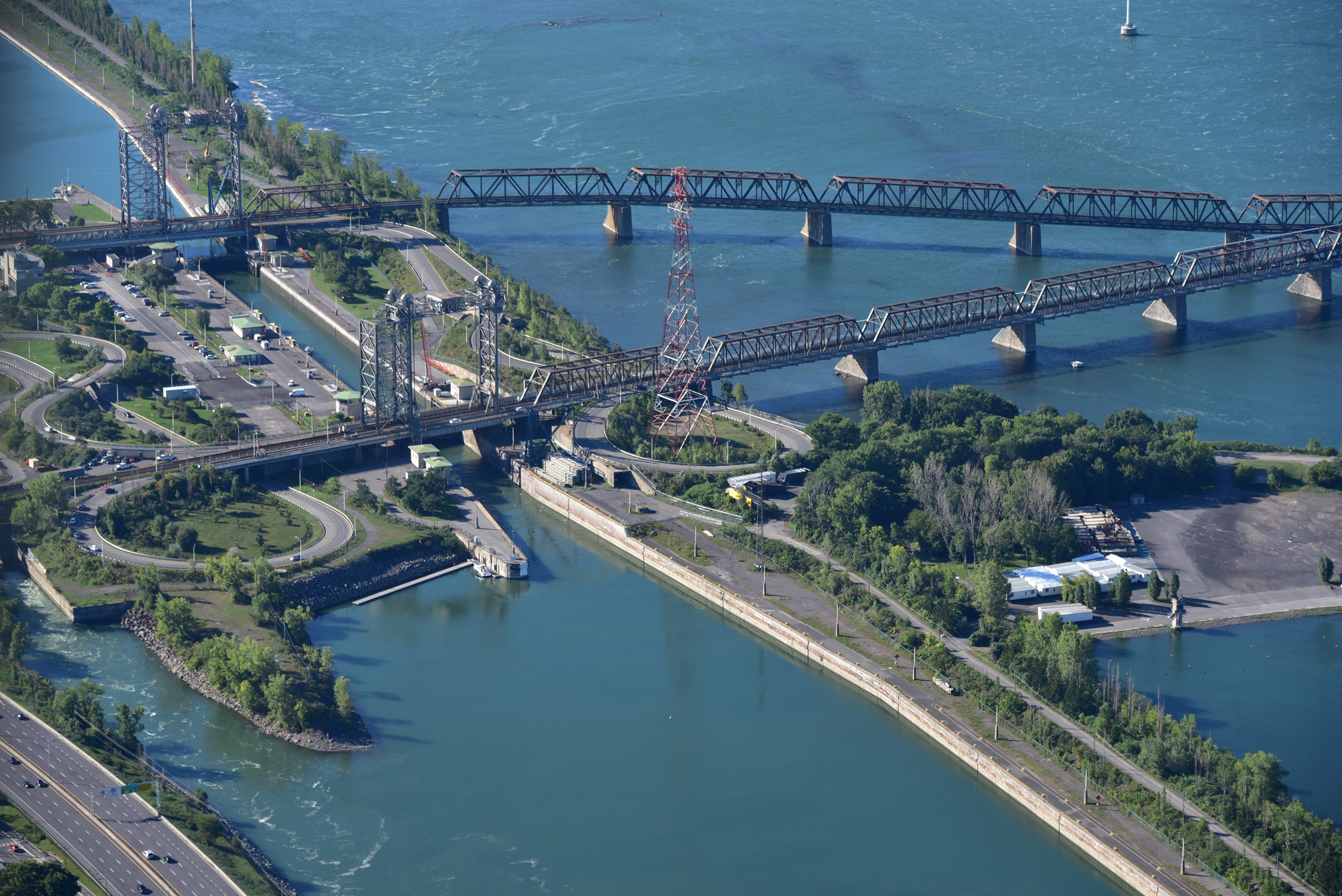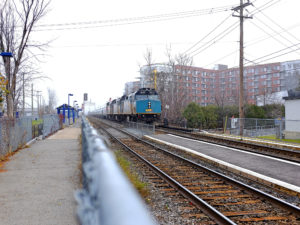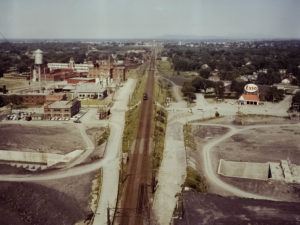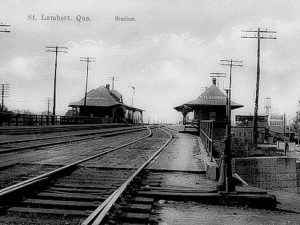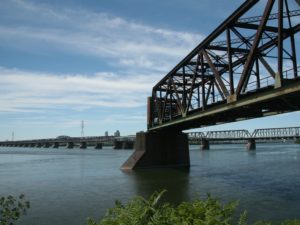Victoria Bridge and Our Railway Heritage
Railway infrastructures linked to our community’s growth
Victoria Bridge and the presence of the railway triggered the growth of Saint-Lambert. Several vestiges of historical evidence continue to remind us today of their importance in our city’s landscape.
Bon voyage!
Linked in 1852 to the network of the Champlain & St. Lawrence Railroad Company, the company that owned Canada’s first railway in 1836, Saint-Lambert was one of the pioneering cities in Canadian railway history.
The Grand Trunk Railway of Canada was incorporated in that same year (1852), with the mandate of serving all of Canada by rail.
In 1853, it merged with five other railway companies, and with major financial support from Great Britain, it considerably expanded its network in several different directions.
Construction begins
In 1854, the Grand Truck Railway began building Victoria Bridge, a massive work and an astounding technical feat for that day and age. Opened in 1859, initially for trains only, the bridge played a crucial role in our country’s railway history. It unified the two parts of the Grand Trunk Railway network, thus concluding a major phase in the development of the Quebec and Canadian railway network.
Victoria Bridge was the first bridge to span the St. Lawrence River, also helping to reduce the natural barrier to trade and traffic that the river had posed since the early days of colonization.
Cars find their way onto Victoria Bridge
Although the bridge opened in 1859, it was only in 1879 that the company introduced the first commuter trains to serve Saint-Lambert. The idea of a tramway network that would link Montreal to Saint-Lambert via Victoria Bridge originated in 1897, following the incorporation of The Montreal & Southern Counties Railway Company and the enlargement of the bridge to allow car traffic. However, it was only in 1909 that the commuter service was inaugurated, before being extended to other towns on the South Shore. This new service considerably hastened the pace of urban development on the South Shore.
Victoria Bridge, together with the various train and tramway lines running through Saint-Lambert, led to the construction of a series of infrastructures: viaducts, rail lines, control panels, station, etc. These new structures thus represented an important economic driver and required the presence of several trades groups: telegraph operators, cargo handlers, ticket agents, porters, station masters, controllers, switchmen, dispatchers, mechanics, etc. The world of railways also created a language and atmosphere of its own: whistles for train departures, clouds of steam, light signals, warning bells for level crossings, a pace of life dictated by train schedules, etc. Remember that the night before a summer weekend or an official holiday, the trains run by Canadian National (which took over the Grand Trunk in 1923) put on a veritable show in Saint-Lambert. In the 1950s, when around 80 to 100 trains would pass each day over the Saint-Lambert lines, the southern end of the turning triangle would be a great place to watch this endless parade of eastward- or southward-bound trains in the evening.
Building of the St. Lawrence Seaway
The building of the St. Lawrence Seaway, begun in the mid-1950s, required the construction of a lock upstream from Victoria Bridge in Saint-Lambert.
To ensure ongoing train, car and ship transit, a bypass route was required upstream from Victoria Bridge. The final result was a series of highly unusual structures designed to shunt car traffic to one or the other of the lift bridges, depending on whether a ship was entering or leaving the lock. These engineering works changed the original look of the bridge and its approaches.
Bibliography
- Booth, Derek J., 1985. Railways of Southern Quebec, Volume 2, Toronto. Railfare Entreprises Limited.
- Lasserre, Jean-Claude, 1980. Le Saint-Laurent grande porte de l’Amérique. Lasalle. Cahiers du Québec, Collection Géographie.
- Legget, Robert, 1979. La Voie Maritime. Department of Supply and Services Canada.
- Perry, Lorne. 2014. Saint-Lambert – Train de vie. Saint-Constant, Canadian Railroad Historical Association.
- Thomas Grumley, J.R. 2010. The Montreal & Southern Counties Railway Company (1909-1956), in Histoire Québec, Vol. 16, no. 1. pp. 18-20.
